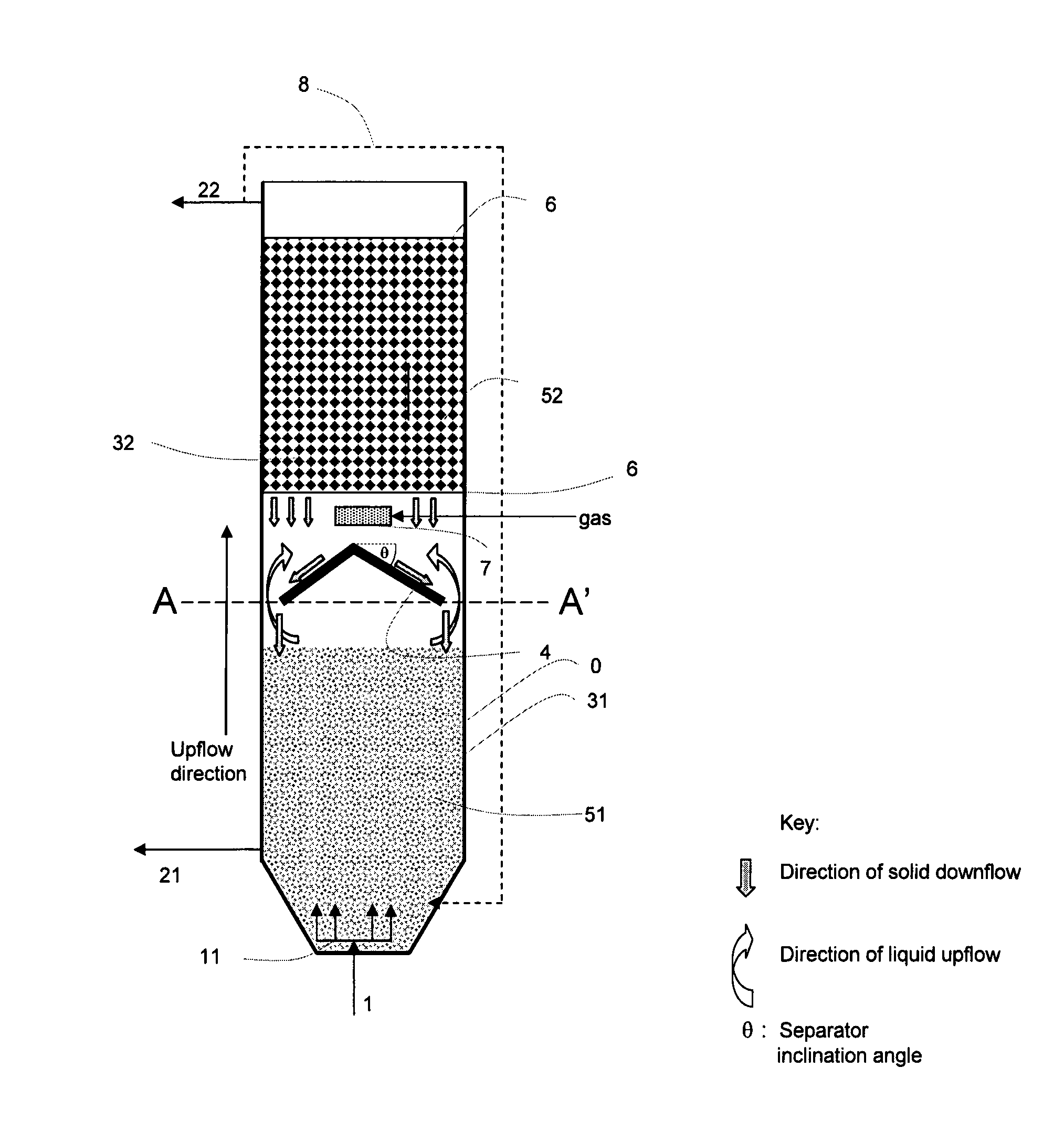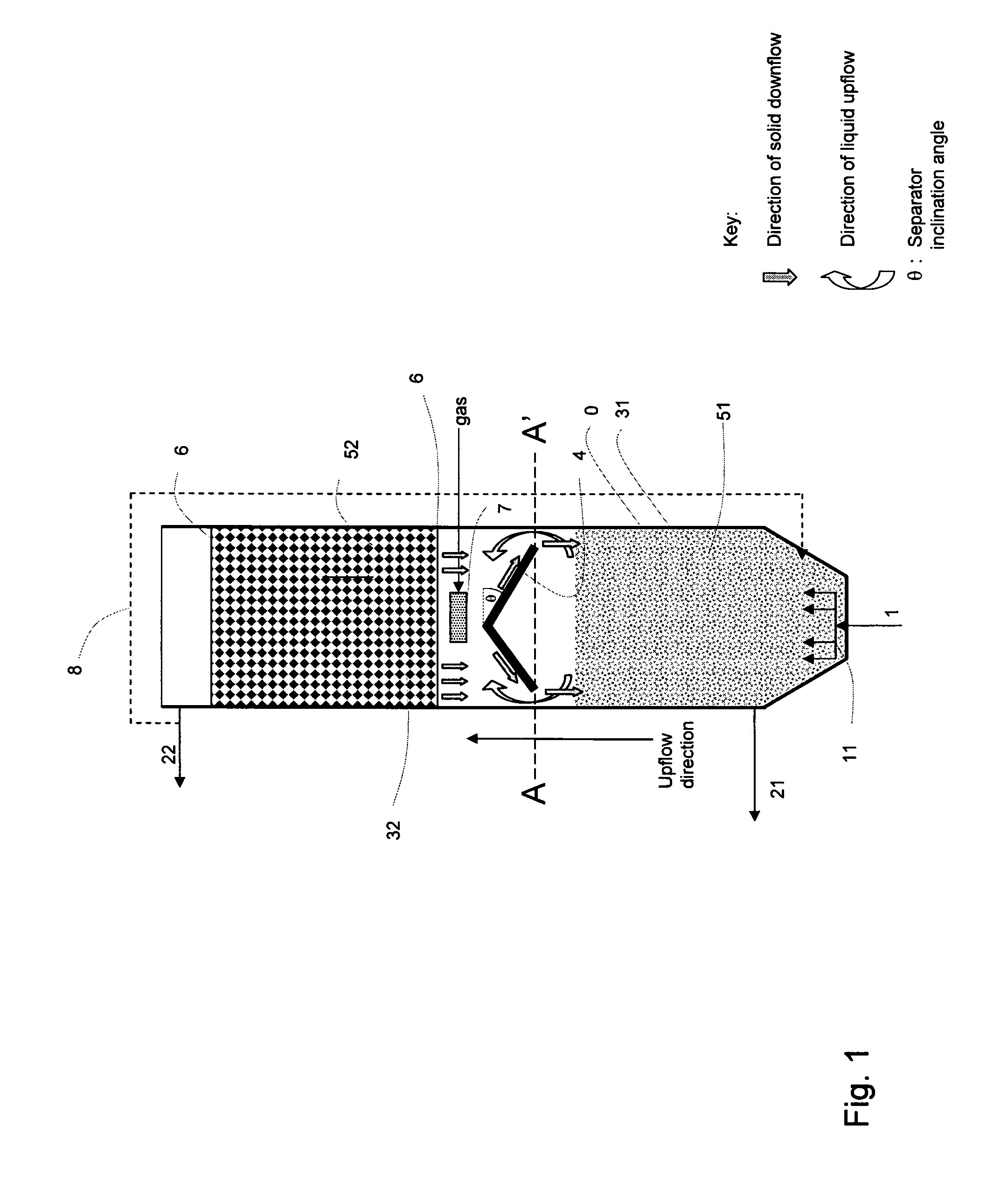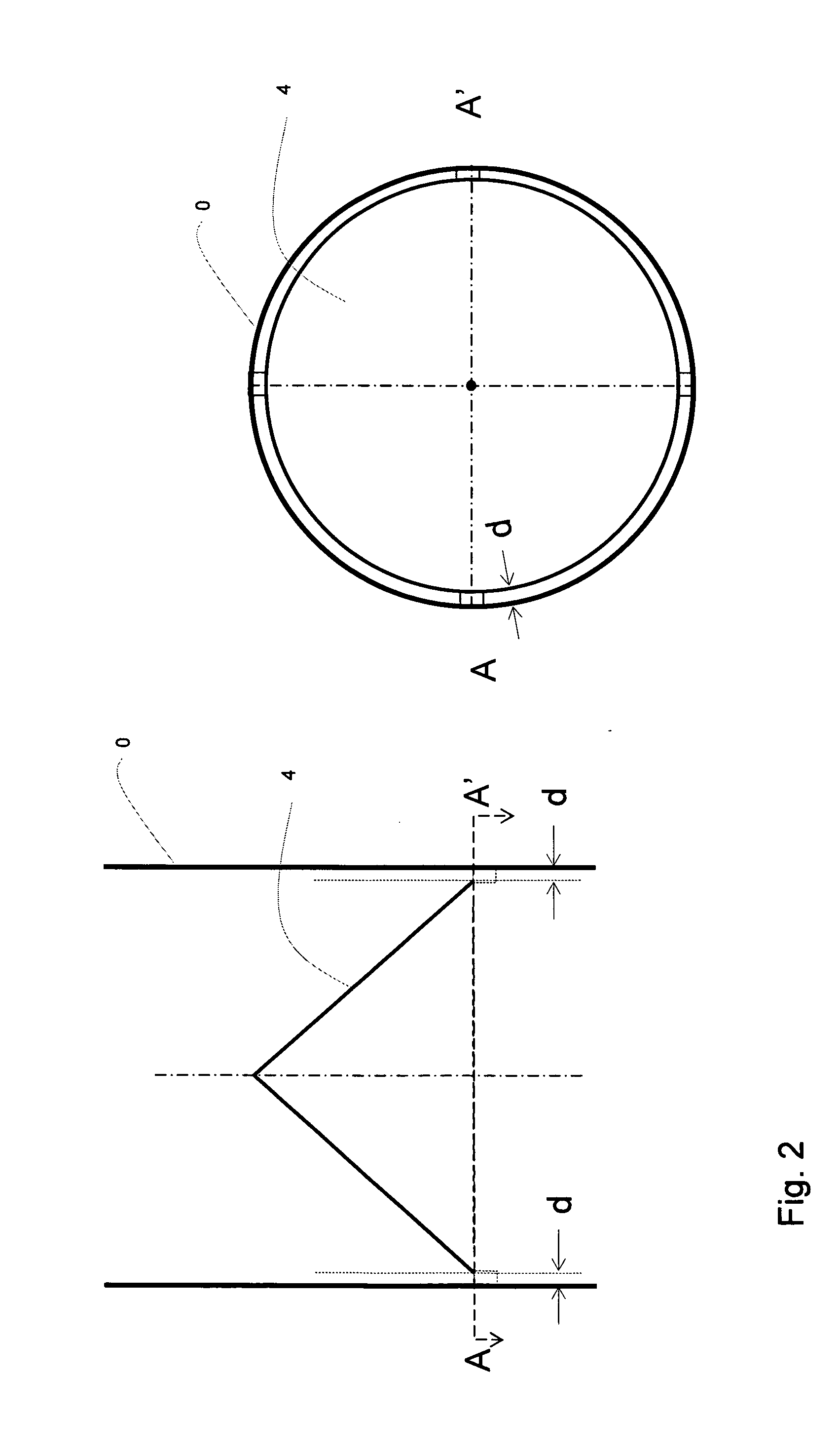Method and device for the treatment of waste water
a technology for waste water and treatment methods, applied in biological water/sewage treatment, water/sludge/sewage treatment, chemical instruments and processes, etc., can solve the problems of unfavorable purification efficiency, high energy requirements, and high oxygen requirements, and achieve the effect of reducing the risk of undesired growth in pipes
- Summary
- Abstract
- Description
- Claims
- Application Information
AI Technical Summary
Benefits of technology
Problems solved by technology
Method used
Image
Examples
Embodiment Construction
[0050]The invention will be described with reference to the attached figures the scope of the invention being solely limited by the enclosed claims.
[0051]The present invention presents a reactor wherein the reactor volume allows an anoxic / anaerobic treatment as well as an anaerobic treatment of feedwater to take place within said volume. The reactor tank (0) comprises inlets for the feedwater (1) to be treated, and outlets for effluent (22) and sludge (21). The inlets (1) for feedwater should be arranged at the lower end of the reactor tank (0) such that the feedwater passes through the sludge or possible biofilm media (51) arranged therein. This is an advantage as the feedwater will provide carbon to the anoxic / anaerobic reaction zone (31). The feedwater will as a consequence first be treated within the lower anoxic / anaerobic reaction zone (31).
[0052]In an embodiment of the invention the feedwater is distributed through a feedwater flow distributor (11) such that the feedwater flow...
PUM
| Property | Measurement | Unit |
|---|---|---|
| velocity | aaaaa | aaaaa |
| angle | aaaaa | aaaaa |
| velocities | aaaaa | aaaaa |
Abstract
Description
Claims
Application Information
 Login to View More
Login to View More - R&D
- Intellectual Property
- Life Sciences
- Materials
- Tech Scout
- Unparalleled Data Quality
- Higher Quality Content
- 60% Fewer Hallucinations
Browse by: Latest US Patents, China's latest patents, Technical Efficacy Thesaurus, Application Domain, Technology Topic, Popular Technical Reports.
© 2025 PatSnap. All rights reserved.Legal|Privacy policy|Modern Slavery Act Transparency Statement|Sitemap|About US| Contact US: help@patsnap.com



